Day Hiking Essentials: What I Bring on Every Hike
This is all of the gear I bring with me on every day hike…nothing more, nothing less.
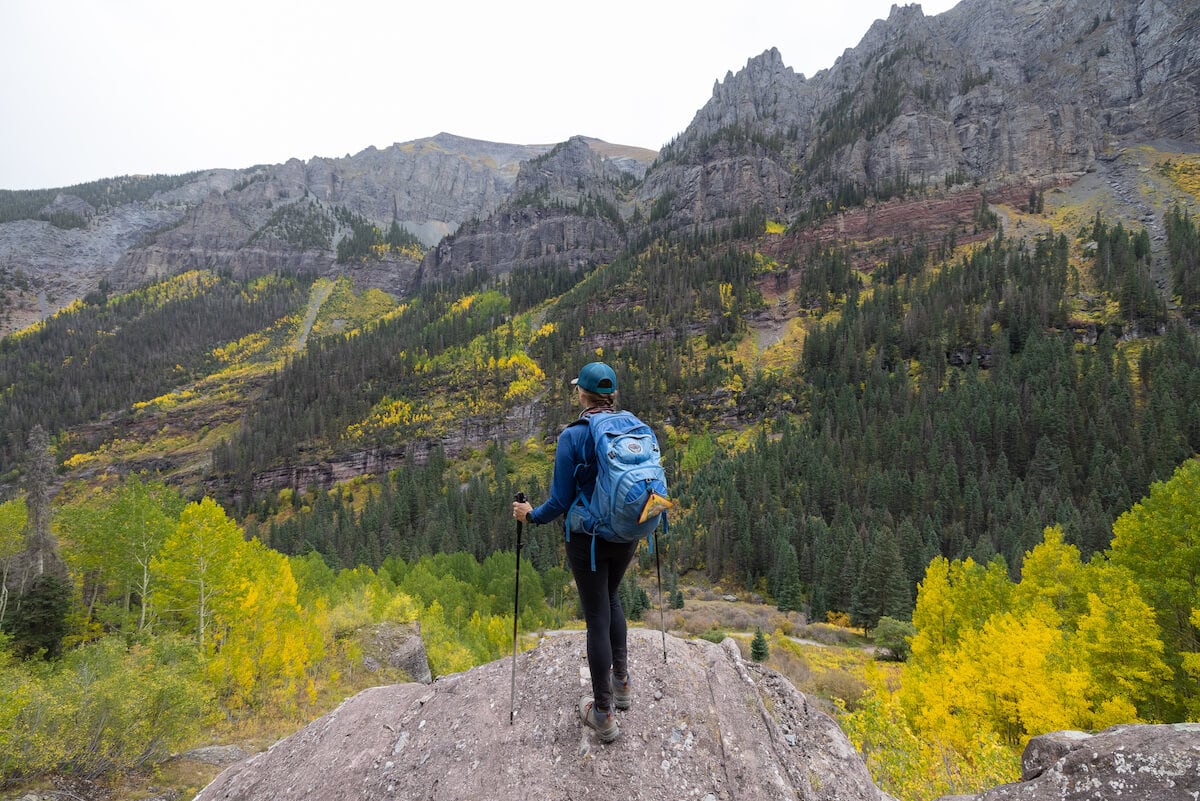
What I love about day hiking is it doesn’t require a huge upfront investment in gear. A backpack, some good hiking shoes, extra layers, food, water, and a few safety items are really all you need.
Maybe you’ve heard of the Ten Essentials for Hiking? This is a list of recommended items you bring on every hike that was invented waaaayyyy back in the 1930s. Obviously, the hiking world (and gear) has changed a lot since then, so what you’ll find here is my practical, modern version of the Ten Essentials for Hiking.
I suggest you take my day hiking packing list below and adjust it based on how far you are hiking, how remote the trail is, your experience, and the weather conditions. For more beginner hiking tips, check out my Hiking 101 Article.
This post may contain affiliate links.
1. A Daypack
One of the most important pieces of gear for a day hike is a good hiking daypack. Sure, you can use that old JanSport from your closet if you’re sticking to short, flat trails, but if you’re planning to spend several hours on your feet with all of the necessary hiking gear, having a pack that actually fits your body and supports a heavy load makes a huge difference.
For most hikes, a pack in the 20–35 liter range is the sweet spot. It gives you enough space for extra layers, food, water, and all the essentials I mention below, without feeling bulky or having to cram too much in a smaller pack. I personally prefer something closer to 30 liters since I also carry a bigger camera and all of the gear for my toddler.
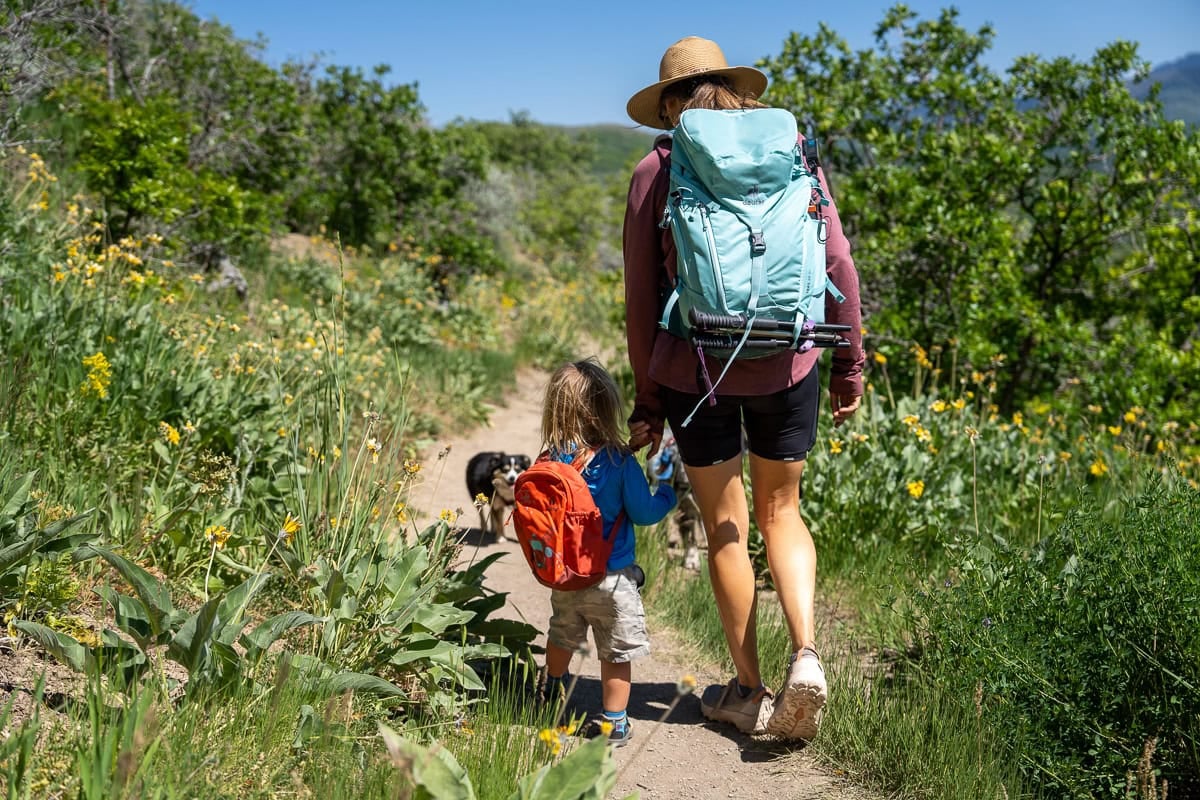
Here are a few features I always look for in a quality daypack:
Investing in a pack that fits well can completely change your experience on the trail for the better.
Daypack Recommendation
One of my favorite daypacks for carrying everything I need to bring hiking is the deuter Trail 28 SL. Designed with women in mind, the SL (slim line) fit is ideal for those with shorter torsos or narrower frames, and it hugs the body in all the right places without feeling bulky. I have the SL version, but the Trail 28 also comes in a standard fit, which works well for people with broader frames and longer torsos.
What I love most is how balanced and supportive it feels, even when it’s fully packed. The streamlined cut, padded hip fins and S-curved shoulder straps that contour a woman’s chest help distribute weight comfortably. And if you get really sweaty like me, you’ll love the ventilated back panel that keeps air flowing and prevents that sticky back feeling on warmer days.
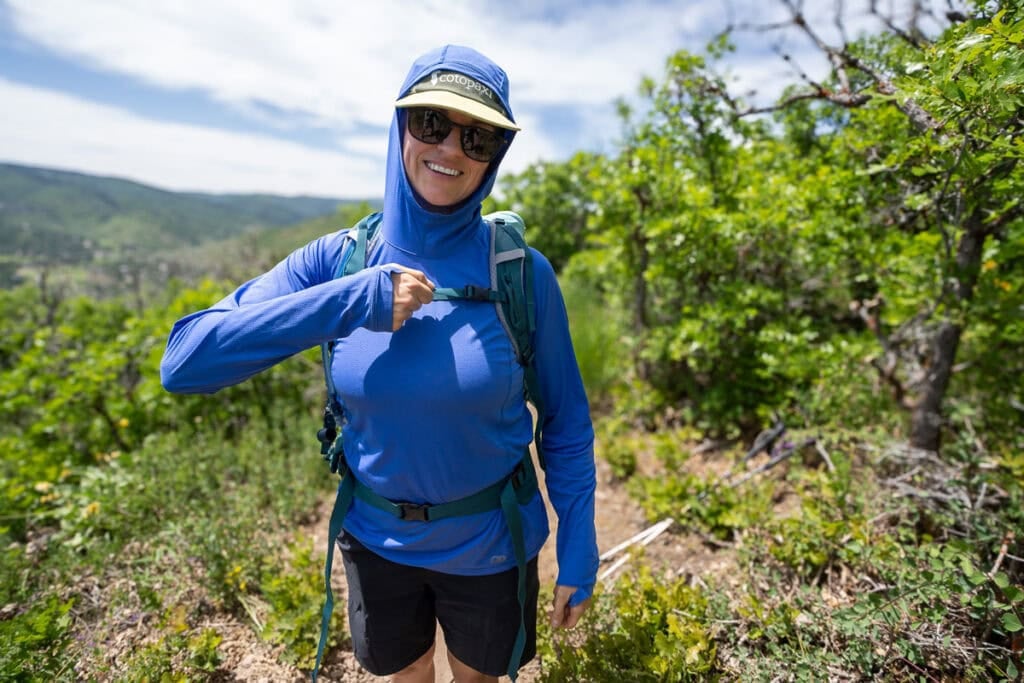
It’s also thoughtfully designed with plenty of storage—including a zippered lid pocket, hip belt pocket, a side zip pocket, and bottom zip access so you can grab buried gear without unpacking everything. There’s a sleeve for a hydration reservoir, trekking pole loops, and even a built-in rain cover. For full-day hikes where I’m carrying layers, food, water, toddler gear, and a camera, the Trail 28 SL checks every box.

Save this post!
Enter your email & I'll send this post to your inbox! You'll also receive my weekly newsletter full of helpful advice for planning your adventures.
2. Proper Hiking Layers
Some of the most important day hiking gear is the kind that you wear! No matter what season you’re hiking in, bringing layers along on the trail is important for both comfort and safety reasons. I’ll share some details below, but for more recommendations, check out these posts:
Layer Recommendations
For all of your layers, I suggest wearing synthetic materials (my preference) or wool. Both are designed to wick sweat, dry quickly, and regulate your temperature.
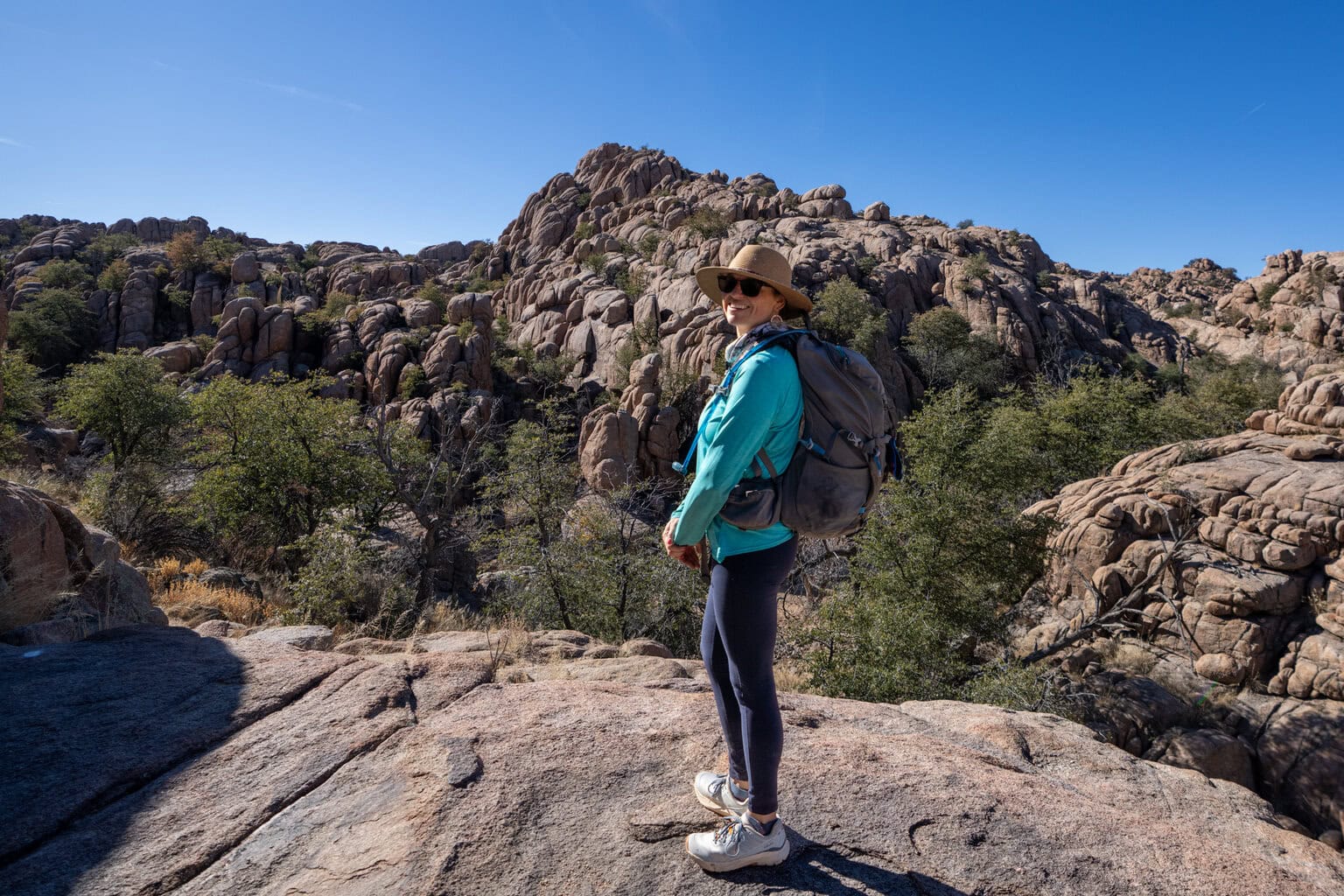
3. Sun Protection
Too much sun exposure can lead to sun burns, dehydration, and heat exhaustion. With summer temps getting hotter every year, adequate sun protection is an important day hiking essential.
To shield your skin from the sun while you’re hiking, bring:
Learn more tips for protecting your skin from the sun with my guide to sun protection for hikers.

4. Map / Navigational Tools
Back when the Ten Essentials list was invented, smart phones didn’t exist, so the recommendation was to carry a paper map and compass. While I highly recommend that for backpacking trips and more remote areas, a hiking or navigation app on your phone is usually enough to suffice on most day hikes where the trail is well-defined.
The two apps I use most are AllTrails for finding trails (get 30% off here) and Gaia for navigation (get 10% off here). Both of these offer paid plans that allow you to download the trail map to your phone so you can use it when you don’t have service.
If you are going to rely on your phone, it’s critical that you download the apps for offline use and that you have a full battery when you leave the trailhead. Also, know how to use the apps that you are relying on! If you’re worried about your phone running out of battery, consider bringing a lightweight, portable power bank.
5. Plenty of Water
The number of people I’ve seen hiking lately without any water has been shocking. Your body needs water to function at its very best, and running out is a quick way to end up in an emergency situation.
I hike with a 3-liter hydration reservoir in my backpack, and I make a good habit of filling it up before I leave my house, even if the hike is short. That way I have extra in case I’m out there longer than expected or someone else in my group runs out.
If the trail is longer than 8-10 miles or it’s extremely hot out, I’ll also bring my water filter so I can refill on the trail if needed.

6. Energizing Snacks
It’s important to bring enough food for the day to stay full and keep your energy up. The best hiking snacks are packed with nutrients, so grab some energy bars, nuts, trail mix, and dried fruit. I love these Bobo’s Oat Bars for a quick breakfast on the go and Honeystinger Waffles and energy chews for treats.
Sturdy fruits and veggies like apples, oranges, or carrots that won’t get squished in your bag are also great options. Or you can always pack one of the classic trail snacks: a good ol’ peanut butter and jelly sandwich.
It’s important always to make sure you have enough food, but the point of having extra is in case of an emergency. It’s better to bring a little extra rather than not have enough. Plus you’ll be burning more calories than you might be used to, so don’t skimp on snacks and nutrition.
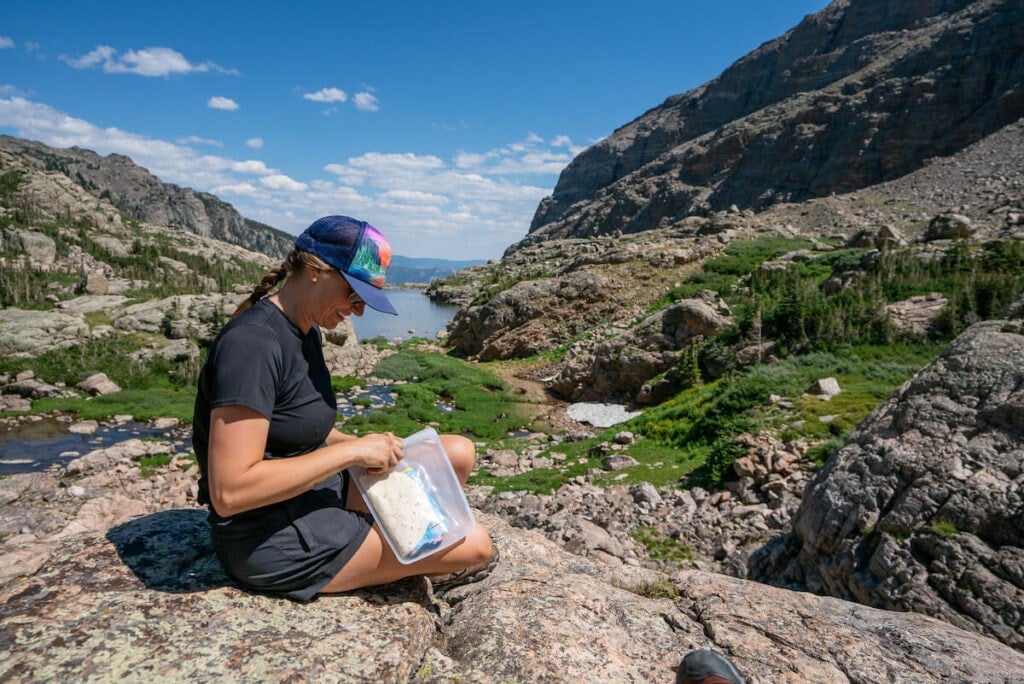
7. Emergency / Safety Supplies
While an emergency is unlikely on a day hike, things can and do happen, so you want to be prepared. What being prepared looks like depends on the type of trail you are hiking.
If you are hiking on a shorter, well-marked trail where there is cell service and a ton of people, you may not need some of these supplies (such as a bivvy). But if you are headed to a remote area that doesn’t get a lot of foot traffic and the trailhead is far from help, then you’ll need a more robust emergency kit.
Here are the emergency supplies I throw in my day pack for challenging, remote hikes:
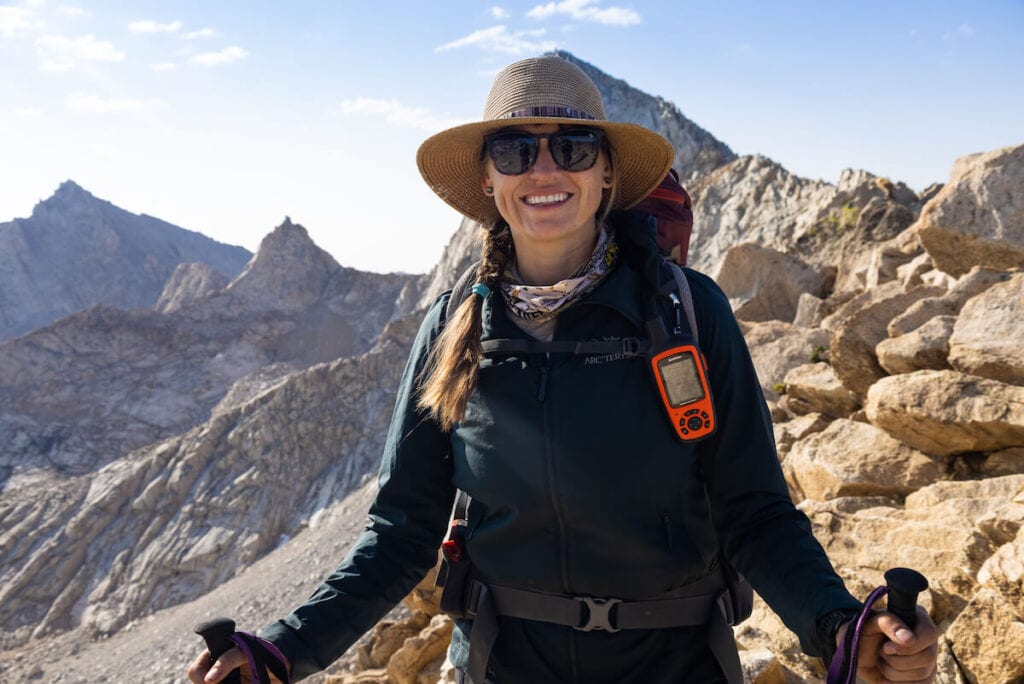
8. Trekking Poles
Trekking poles aren’t on the list of the Ten Essentials, but I consider them a must on more difficult day hikes.
Trekking poles take the pressure off your knees on the downhills, give you more power on the ups, and help maintain a rhythm while you’re hiking. They also provide stability when crossing streams.
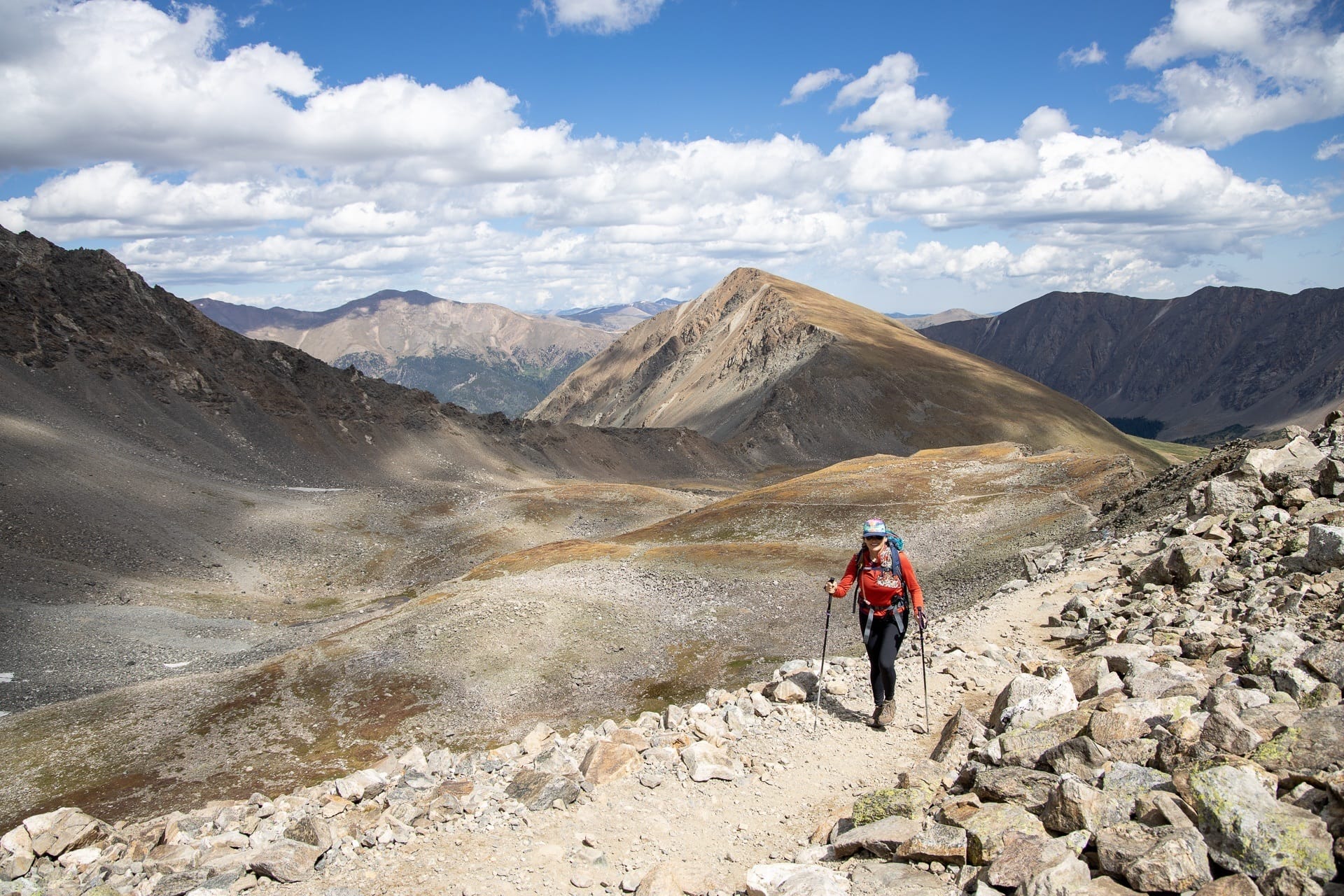
9. Bathroom Kit or Pee Rag
This also is not on the original Ten Essentials list, but with how many people are getting outside today, having the right supplies to go to the bathroom while following Leave No Trace is important for protecting the environment. It also helps maintain proper backcountry hygiene.
First, brush up on Leave No Trace principles and make sure you know how to properly poop outside – just in case!

10. A Multi-Tool / Knife
A multi-tool is on the Ten Essentials list. This can come in handy for making repairing gear, cutting blister pads, or pulling out splinters. I have the Classic Swiss Army Knife that has scissors, a screwdriver, tweezers, and a couple of other handy tools in a package that only weighs 0.7 ounces. I keep it in the hipbelt of my daypack, so I always have it on me just in case.
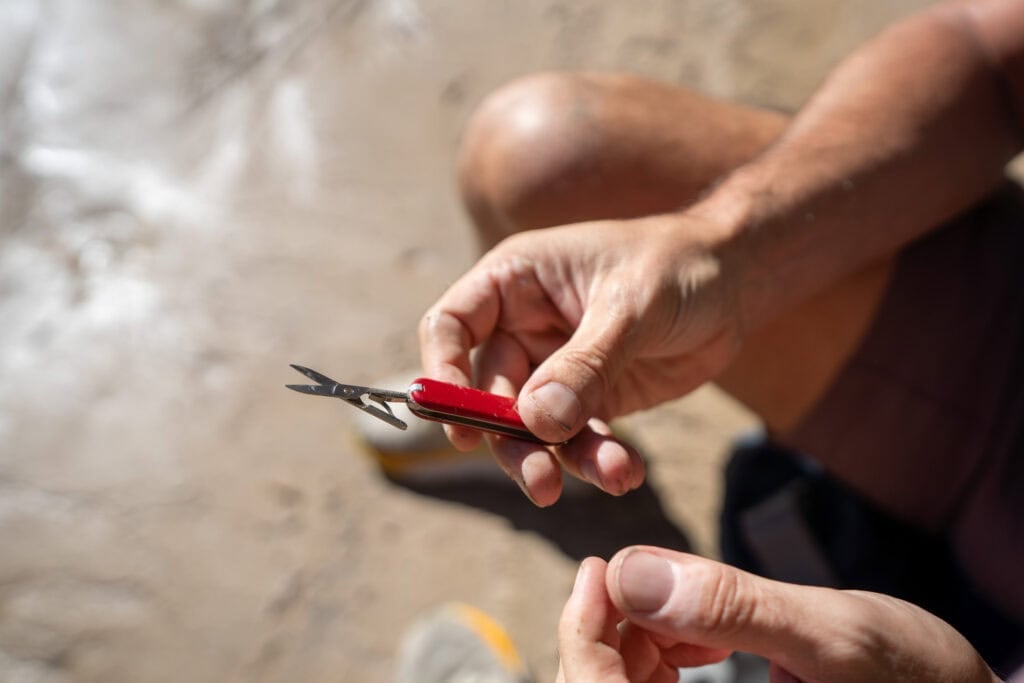
Other Considerations
If you are hiking with kids or bringing your dogs on the hiking trail, this list is going to look different.
For babies/toddlers, you will need things like a baby carrier, diapers, snacks that they can consume while in the backpack, extra water, and a change of clothes in case they have an accident.
For dogs, don’t forget a collapsible water bowl, some treats, poop bags, and a leash/harness.

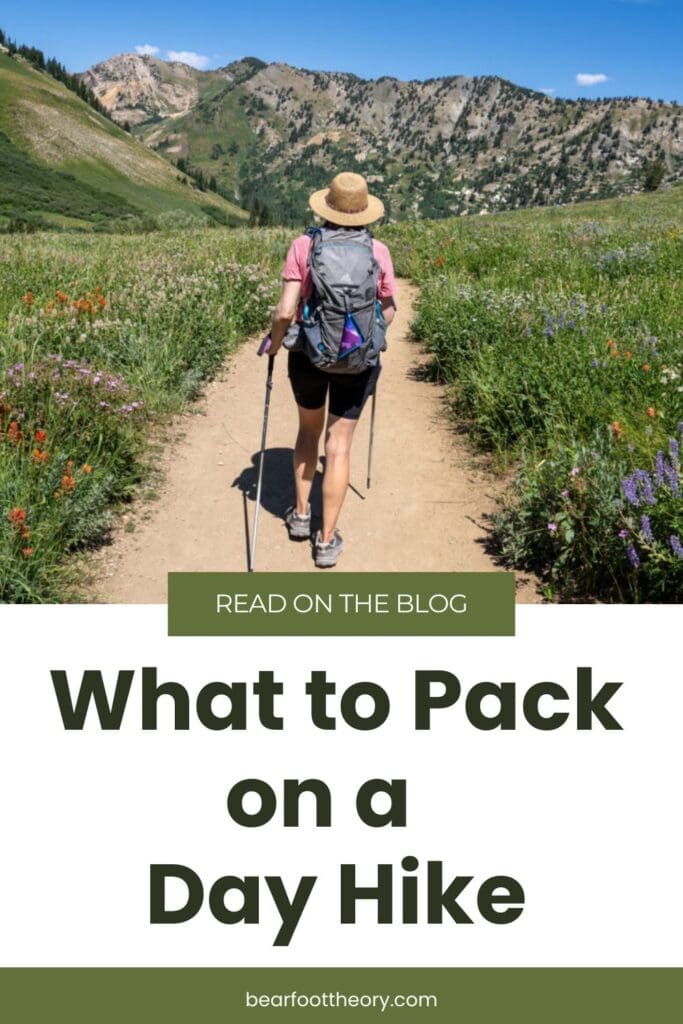
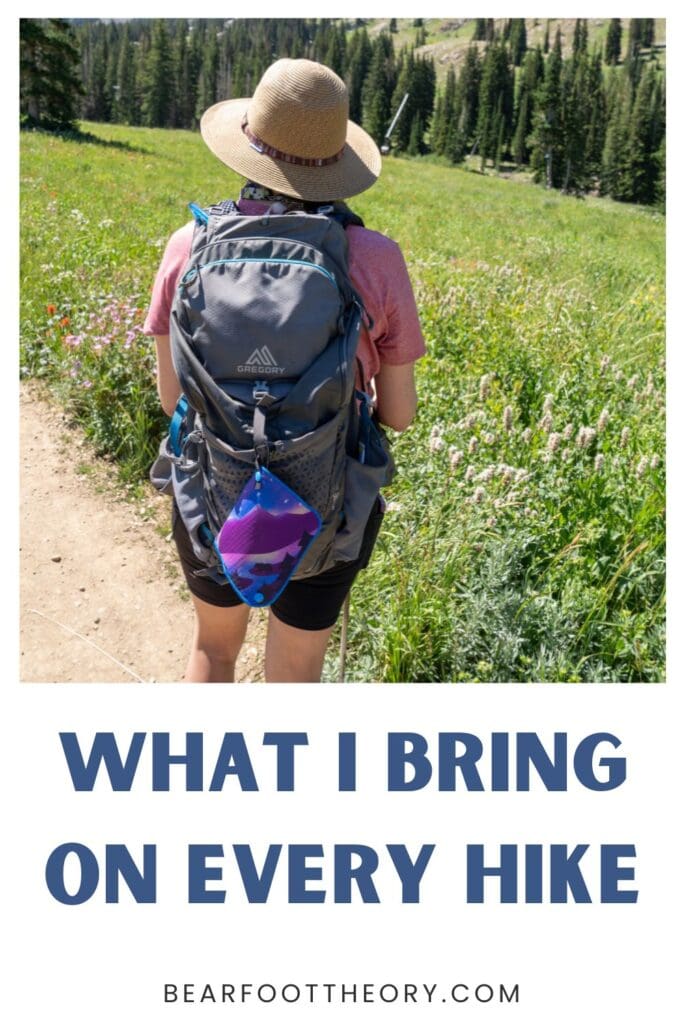

Maybe if you are relying on your phone, consider a power bank in case your battery drains – especially if it’s cold. When I went to Iceland in the winter my battery drained in about half an hour due to the cold. I need to get myself a first aid kit. I’m lucky if I have plasters at the moment but having just done a fieldwork first aid course, I really do need to get one.
A really great trick I learned is duct tape. Wrap it around (and around and around!) your hiking poles. You can peel off pieces as you need them – good emergency bandages, tent repair, clothing repair…it’s pretty useful.
Thanks, Kelly, for sharing! I did this for the PCT and used it often—very helpful!
Agree with the list, but I swear by the inclusion of a Bothy Bag, especially hiking in the UK.
I always carry an extra pair of socks, and two empty sliced bread bags. Why? It’s an old Boy Scout trick. If your feet and boots get soaked, stop and dry off your feet. Put on your dry socks, and then put each foot in a bread bag before putting on your boots. It will keep your dry socks from absorbing moisture from your boots, and keep your feet dry.
In addition to the items listed in the article, I always take a 3X5 signal mirror w/retro reflective aimer , a pealess whistle, and a handheld amateur radio. All this does not add too much added weight to my pack.
Like your list, but because I hike alone frequently I include some items that would help if I had to be out overnight (injury etc.)
I include a good puffy, a lightweight tarp and a bothy bag or space blanket.
Hi Michael, those are all great items to add to your list. I take my puffy everywhere as well.
I always carry a LifeStraw filter, a single wall stainless steel water bottle, an empty Platypus bag, 10 feet of good paracord, an emergency bivy sack, a large trash bag, a first aid kit, a headlamp, a lighter, waterproof matches with two fuel tabs, lip balm, sunscreen & bug spray in summer, snacks, a wide saw, a map, a compass and a warm layer in a waterproof bag.
On my person, I wear layered appropriate clothing with boots & gaiters, either a warm or Sun hat, a belt, a belt knife, bear spray and sometimes my gun. I also wear an emergency whistle, and carry my cell phone and a firesteel.
I leave a note in my truck saying where and when I left and any other pertinent details. I also carry vehicle emergency stuff, a change of clothes, a sleeping bag, and food and water for three days.
I also carry a measure tape in my pack and have plaster and stuff for casting in my truck 🙂
Y’all all are taking about casting, what is that for please?
I think they are referring to making a cast out of plaster in case someone gets injured 🙂
Great list! I would add a couple of safety or emergency items, such as a whistle, signaling mirror just in case you get hurt or lost on the trail.
Nice blog. It will surely help beginners update their knowledge. The efforts you have put in to create the posts are quite interesting. Looking forward to seeing you soon in a new post.
We have a hiking packing list of essential items written down below that you will need to keep them with you for going on a hike. You never know which one is going to come handy for emergency purposes.
Nothing to make fire with in the event you are lost ? How do you keep from getting hypothermia, especially in rain or snow?
That’s a great suggestion, Wesley. We tend to focus more on having the right navigational tools like a map and a GPS/communication device in case of emergencies, but a lighter or some matches are always useful to carry just in case.
I bring a couple items that are less remembered including lip chap, as having chapped lips at a higher elevation is really painful. I also bring Kleenex/tissue/toilet paper. My nose tends to run like a facet the higher I go in elevation and most of the washroom facilities are out out toilet paper.
Those are definitely essentials as well. Thanks for sharing!
I think essentials vary quite a bit from location to location and depend on time of day. We generally hike in Texas with water and snacks being the most important to carry. Of course, we use sunscreen most of the year when shade in not abundant. Most of the year layers and backpacks are too bothersome. I’ve been using an adventure vest to hold water bottles and other items. When full it weighs only a few pounds and is hardly noticeable because it’s designed for runners. However, I have been wanting to try one of the osprey packs which pushes away from the lower back allowing constant airflow.
We move at a very brisk pace because we hike with our dog and I’ve never tried to use poles or sticks. I can’t see how those would do anything but slow us down.
I do carry a headlamp now because we have been caught on the trails at sunset before. I also carry my binoculars because I’ve been at multiple scenic viewpoints without them only to wonder why I did not have them with me. Surprisingly, we almost never encounter snakes out here, but boots are the best way to go in case we do step near one. That and most trails are full of tripping hazards like rocks or tree roots.
Even on short hikes, I carry pretty much everything you mentioned, but have also started including a few snack size zippered bags, some toilet paper, and vinyl gloves & hand sanitizer ‘just in case.’ Longer hikes and/or cooler weather sees a space blanket and fire starter (like fatwood) tossed in the pack too.
Agree with the others, whistle, mirror signalling, space blanket or bivvy, firelighting headlamp and water purification system.
Also let someone know where you’ve gone, your route and when you’ll be back, so they can help direct rescue if needed.
Hi Ian, these are all great items to bring on a hike – thanks for the suggestions! We added in a note about checking in with someone to let them know of your plans/expected return. Happy hiking!
Oh, and you should know how to use a map and compass also, else they won’t help much
I often hike in the desert and will usually bring a smaller water bottle with electrolyte drinks (scratch labs has some great options) in addition to my main water bladder. Also, I bought a Gamin hand-held GPS because I have seen too many times where my phone was not able to connect to GPS when I needed it. Lastly I always leave my music and drones at home so I do not impact other people trying to enjoy themselves.
Hi Matt, great tips! I also like carrying a soft 1L bottle for electrolytes on long and/or hot hikes. Thanks for sharing these tips.